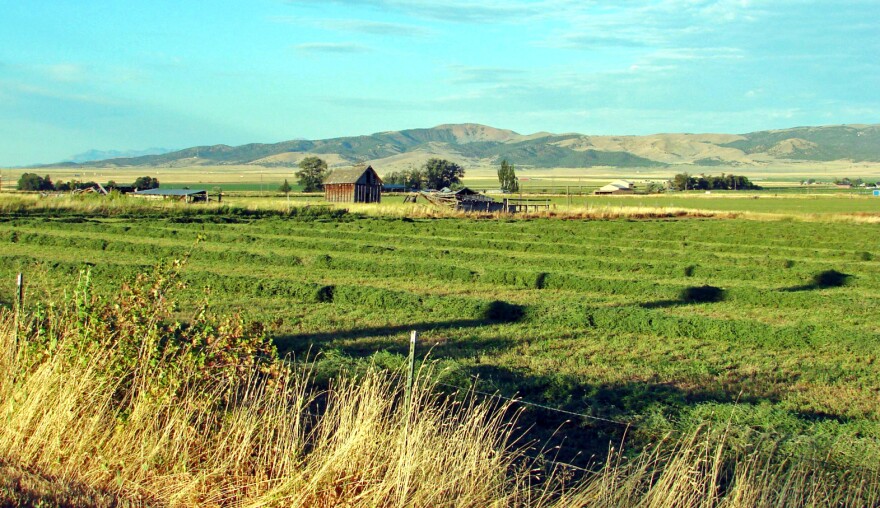Utah’s hay shortage and demand is causing a unique struggle for animal owners this year as the state continues to experience more climate and market extremes.
At the stables located on the border of Utah and Idaho, the hay shortage caused by the drought that’s plaguing the West has made it a costly year for Wendy Hanger to feed her 20 horses.
“Normally the reservoirs around here get filled with water and that’s our irrigation water. When summer came, the reservoirs were only a little over half full, so they told the farmers, 'You can’t have all your water this year so their crops weren’t all that great,'” Hanger said.
So when farmers couldn’t even fill their own hay barns, they decided they couldn’t afford to sell to animal owners like Hanger.
“And that’s when I started panicking," Hanger said, "because I couldn’t find hay.”
“Utah has been specifically hurt just because of the drought,” said Ryan Larson.
Ryan Larson is the Extension Economist at Utah State University, in charge of educating and analyzing economic issues that pertain to agriculture.
“Hay producers, and really anybody that’s feeding alfalfa, has really paid the price for these current conditions,” Larson said.
In addition to drought, Larson said Utah has continued to export a large percentage of its hay yield out of state, causing the shortage to create competition between Utah ag owners in order to get the supply they each need.
“So we’re trying to battle how do we continue to export hay and how do we have enough hay to sustain our own livestock industry within the state of Utah,” Larson said.
When Hanger decided she would have to pay more and go find grass hay, the shrewdness of the shortage became very evident.
“I went to go buy it and the guy said, ‘Oh I just raised it to $200,’ and I said, ‘Well that’s not what your ad said,’ and he said, ‘Well I’m changing my ad.’ And I just said 'I’m sorry, I just can’t afford any.' You know, I just thought, ‘I’ll just get rid of horses,’” Hanger said. "So I raised the price of my babies [horses] to sell them, but I spent more on hay so I actually made less. And I’m not taking in any new boarders because I don’t want to go look for hay.”
Larson said the future of Utah agriculture is depending on the amount of snowfall of the upcoming winter because of how much it’s depended upon.
“And so if we don’t get that, it could be really dire circumstances coming in 2022,” said Larson.







